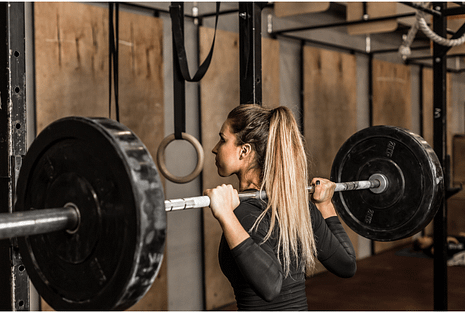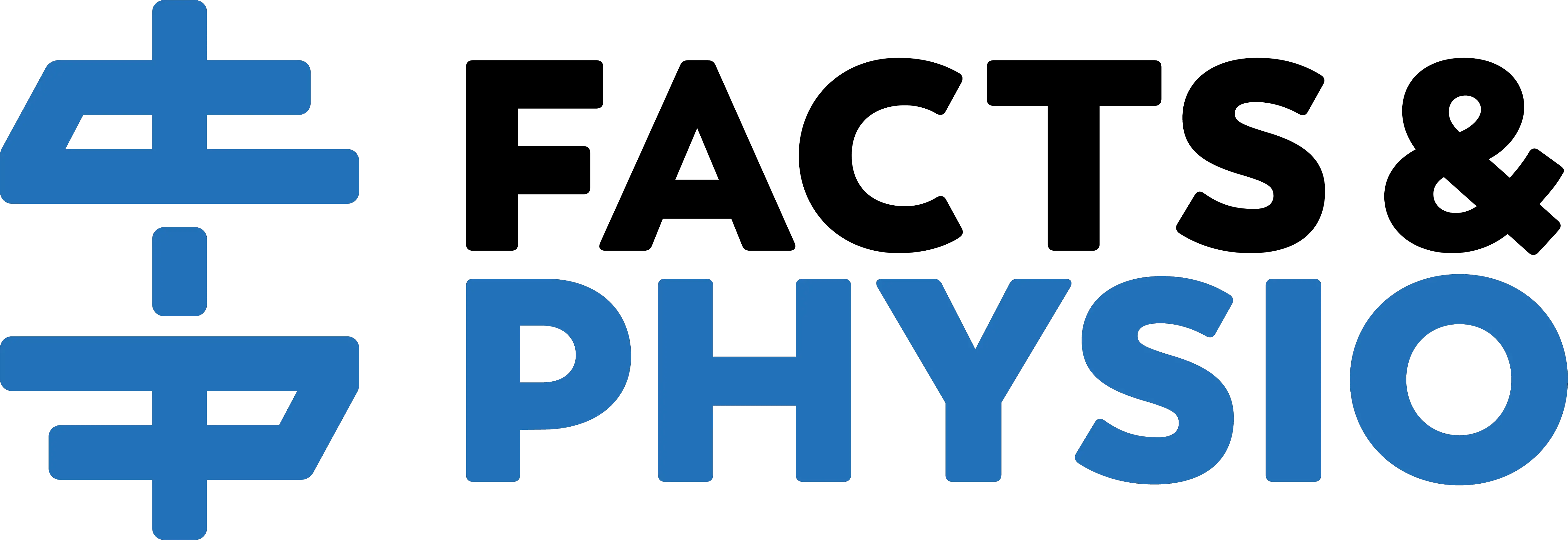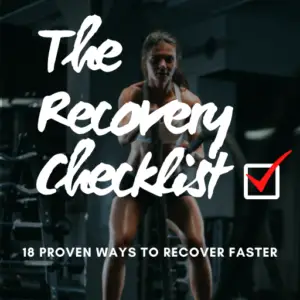Massage guns are trending harder than artificial intelligence. They’re the hottest thing to hit health and fitness since foam rollers. Even rehab professionals are now using percussion therapy on their patients.
It begs the question: Do massage guns work? And are they worth all the hype?

This article looks at how to use massage guns, their limitations, and the best options on the market. But first, let’s dive into the science of percussion therapy.
The Science
Massage guns haven’t been around very long, so research is limited. But early data shows promise.
Do Massage Guns Reduce Muscle Soreness?
Yes. Early research shows massage guns reduce delayed onset muscle soreness (DOMS) after resistance training (1,2). Specifically, study participants did barbell squats for 10 sets of 10 repetitions. Ouch!

For reduced soreness, use percussion therapy on the target muscles after exercise: On your pec muscles after chest day, on your quads and glutes after squats, and on your calves after running.
Does Percussion Therapy Improve Flexibility?
Yes. Massage guns improve muscle flexibility without causing weakness. Why is this important? Static stretching >60 seconds causes weakness (3). It’s one reason static stretching is overrated and should be avoided before a workout.
Are Massage Guns Useful Before Exercise?
Yes. Using a massage gun pre-training feels amazing. It makes your muscles feel younger and more flexible. Plus, it doesn’t hinder athletic performance like static stretching does (4).
Does Percussion Therapy Reduce Muscle Pain?
Probably. Massage guns likely work through the same mechanisms as massage therapy. Percussion therapy and massage therapy reduce muscle tone and increase blood flow.

Massages ease muscle pain and trigger points (5). So it’s reasonable to expect massage guns to do the same. But research hasn’t tackled this question yet.
How Does Percussion Therapy Work?
Percussion therapy reduces muscle tone. It takes literally tons of force to mechanically deform fascia, which covers muscle tissue (6). So it’s unlikely massage guns break up fascial adhesions. Percussion may have biomechanical effects on the muscle tissue, but this mechanism is disputed.
Massage guns affect the nervous system. Percussion therapy reduces muscle tone and down-regulates muscle tightness. Much like massage therapy does (7). Percussion therapy may also have positive psychological, hormonal, and physiological effects.
Massage guns can reduce muscle pain, although the research behind this benefit is sparse. In my clinical and personal experience, massage guns feel awesome on sore muscles before a workout or after a hard training session.
The Limitations
Massage guns aren’t a panacea for every ache and pain.
They probably won’t cure pain from arthritis or relieve sciatica. Percussion therapy treats muscles. It won’t do a whole lot for joint pain or nerve pain.
Massage guns aren’t for everyone. For example, percussion therapy isn’t ideal for individuals who bruise easily or take blood thinners. Talk with your doctor or physical therapist to see if a massage gun is right for you.
The Tools
With this tool’s growing popularity, hordes of massage gun companies have popped up. Capitalism at work!
Theragun and Hypervolt are two of the most trusted names in percussion therapy. But you can find other well-made, less expensive alternatives.
Here are my favorite massage guns:
Theragun PRO
This is a top-of-the-line massage gun. It comes with 6 different attachments and a rotating arm for easy ergonomics. It feels amazing on sore, tight muscles. Plus, it’s a quiet model with preloaded routines.
It’s easy on the body, less so on the wallet. Check the price here.
Hypervolt Plus
I use the Hypervolt in the PT clinic. My patients love it. It has 3 speeds and 5 attachments. The battery last up to 3 hours between charges.
At half the price of the Theragun Pro, it’s a sturdy, high-value option. See it on Amazon here.
Renpho Massage Gun
This one is a budget-friendly option for giving your muscles some TLC. Plus, it’s rated 4.6 on Amazon (over 26,000 reviews) and comes with 5 attachments.
The Basics
Research shows percussion therapy is beneficial before and after exercise. Try either, or both, and see how you feel.

Use a massage gun like a pro in 3 steps:
1) Get the target muscle in a relaxed, shortened position. Stretching a muscle while massaging it won’t be as effective.
2) Keep it pain free, or work into mild-to-moderate discomfort. Don’t leave bruises. Avoid extreme pain. If you push into pain, make sure it’s a “hurts so good” sensation, nothing more.
3) Spend 30-60 seconds on each muscle, and give the sorest areas a bit more time and TLC. Your muscles will feel looser and less achy when you’re done.
If you’re a massage gun user and it’s not relaxing your knotty muscles, you may want to try trigger point dry needling. It’s a whole new level of muscle pain treatment!
Readers: Have you used a massage gun? Did you love it? Or hate it? Let me know in the comments.
For more fitness insights you won’t find anywhere else, join the free, fast-growing Facts & Physio Newsletter. Plus, get The Recovery Checklist when you sign up.

